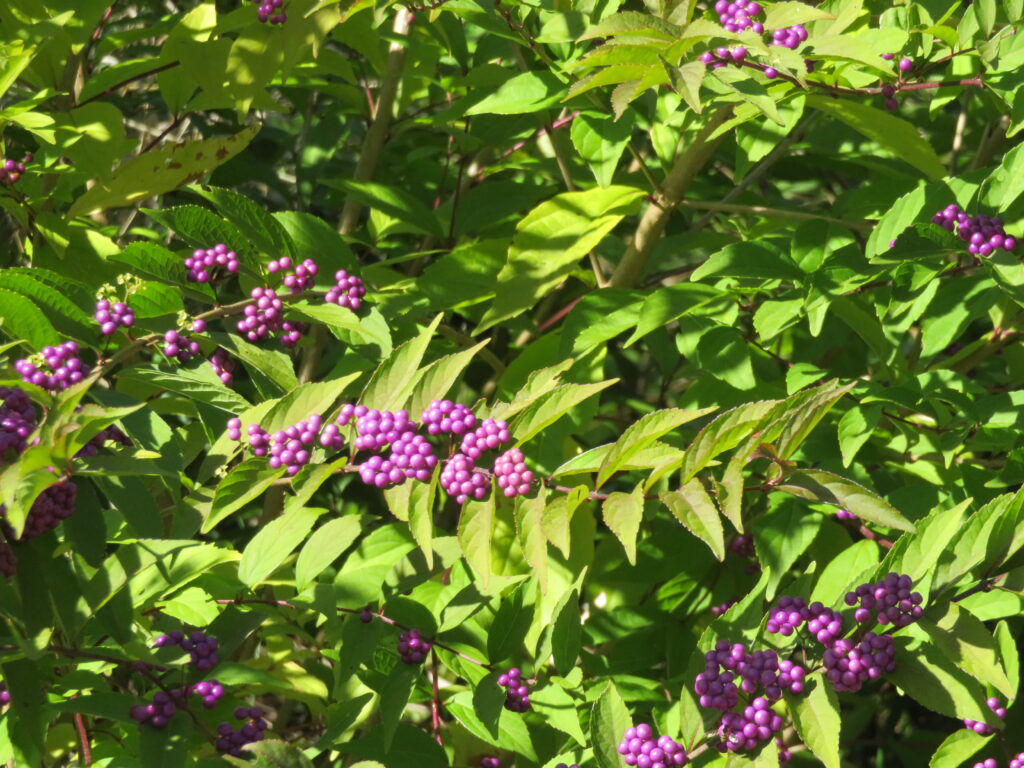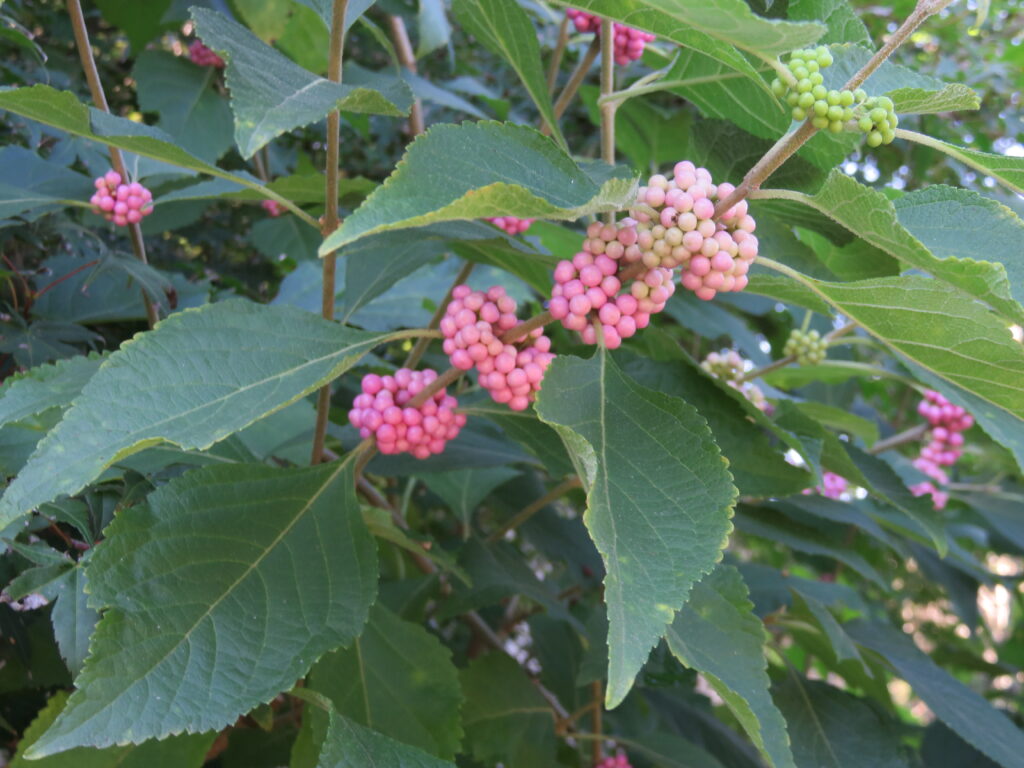American beautyberry (Callicarpa americana) is a deciduous shrub native to open meadows, fence rows, or woodlands in the southeastern U.S. and northern Mexico (Zones 6-11). This vigorous shrub grows to 4-8 feet high and wide and belongs in the Lamiaceae (mint) family.

American beautyberry, also called French mulberry, has an open growth habit and arching branches. The ovate to elliptic, oppositely arranged leaves are coarsely toothed; they range from 3-8 inches in length and 1-3 inches in width. The small, light pink to purple or blue tinged flowers are arranged in dense, axillary clusters along main branches in early summer and develop bright, lavender to violet ¼ diameter fruits in September. White-berried varieties are available.
Beautyberry is widely adapted to moist, well-drained soils containing lots of organic matter. It is not finicky as to soil type as long as drainage is adequate. Mulch first year planted shrubs to conserve soil moisture. Irrigate during prolonged periods of hot, summer drought to prevent early fall defoliation.
Optimum fruiting occurs in full sun, although beautyberry does tolerate moderate shade and be less fruitful.
Prune in late winter to encourage more bushy, compact growth. Plants can be cut as far back as 1-2 foot from the base. Or shrub(s) can also be left to favor a more natural habit. Remove deadwood in spring. Propagate from cuttings or seed.
An unusually cold harsh winter may result in stem dieback, but pruning back shrubs will regenerate vigorous new shoots from the shrub base. Summer flowering and autumn fruiting will be unaffected.

Beautyberry is relatively disease and pest free. Leaf spots are possible but not usually a serious problem. Green leaves emerge in mid-spring on upright arching stems. Clusters of small lavender pink flowers bloom during the late spring and early summer. Clusters of purplish to bluish berries size and color-up in August through October. A pink-fruited and several white-fruited forms are available (see below). Fruits may persist into early winter and are a good food source for songbirds and small mammals.
Shrub size and its loose open form relegates American beautyberry to the back of a shrub border. In large landscapes mass several beautyberry shrubs together for a maximum fall berry show and winter wildlife habitat.
Cultivars
‘Welch’s Pink’ blooms in late spring into early summer and form beautiful pink berries in September that last into winter; grows 4-6 feet tall and wide, smaller than the species; initially found in east Texas and rated winter hardy in zones 7-11.
Var. lactae produces white berries in the fall.
Factoid: the sap from crushed leaves of American Beautyberry have proven to repel mosquitoes and biting bugs both on livestock and humans.

 Posted in
Posted in 
